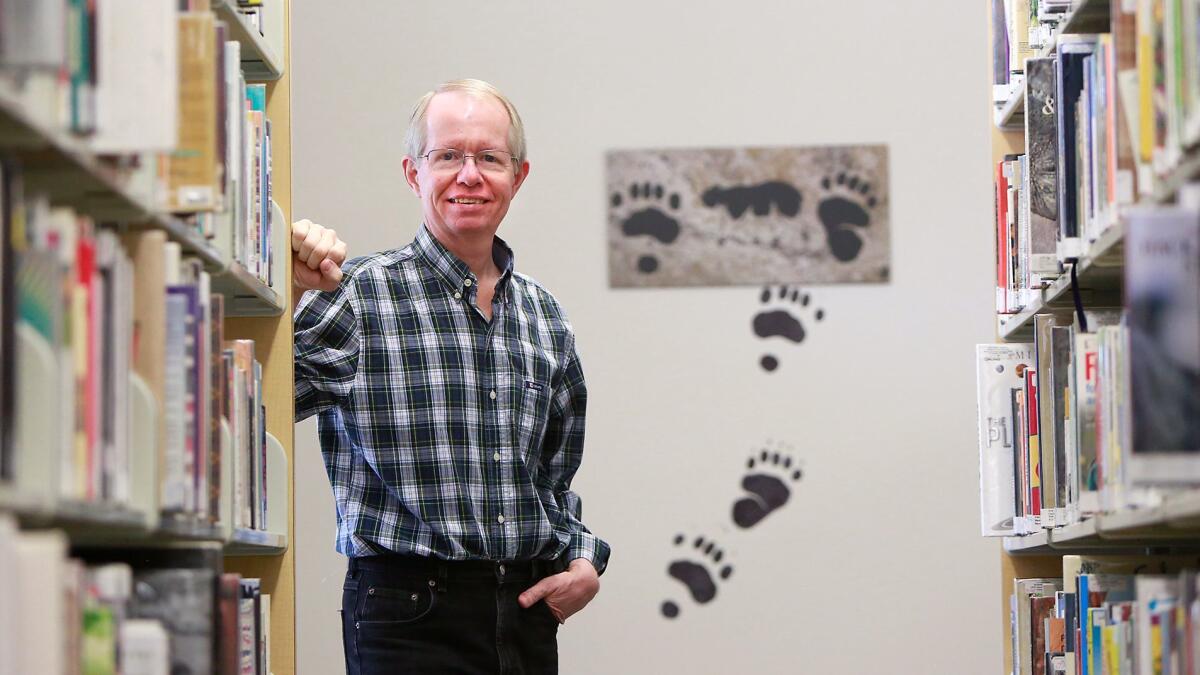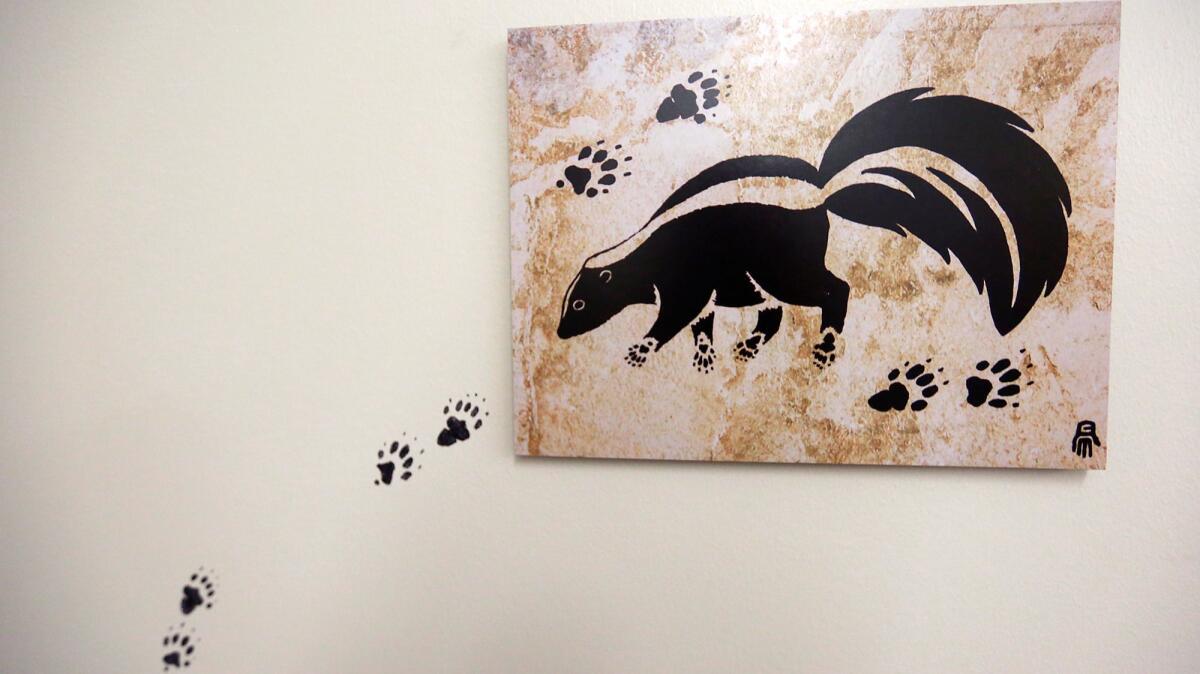Follow the painted animal tracks at Library of the Canyons to prehistoric-style art

- Share via
Visitors to the Library of the Canyons can’t help but notice the varieties of animal tracks winding along the walls.
There are paw, hoof and claw prints.
For the record:
1:20 p.m. Oct. 23, 2017An earlier version of this article gave an incorrect address for the library. It is at 7531 E. Santiago Canyon Road in Silverado Canyon. Also, Pamela Chesney-Algar was incorrectly identified as the youth services librarian; she is the library’s branch manager.
If you can’t match a print with its corresponding four-legged mammal, just follow the tracks to a painting of the animal that left it, be it bobcat, deer, skunk, fox, opossum or raccoon.
Of course, the tracks weren’t left by actual animals walking on walls.
They were created by Silverado Canyon resident Robert Meyer, 56, an artist and nature aficionado.
“A lot of what I was trying to accomplish was education,” Meyer said. “The thing is that you can read a track like you can read a book. They tell stories.”

Funded and operated by OC Parks and OC Public Libraries, the Library of the Canyons at 7531 E. Santiago Canyon Road opened in July, occupying the old Silverado Elementary School site, which closed 10 years ago.
The library has a direct connection to the Mesa Loop Trail along with connections to other trail systems.
In September, Meyer approached library officials about installing his tracks and animal paintings. His timing was perfect, since administrators had been brainstorming artistic themes for the new library.
“When he walked in, it felt very serendipitous,” said Pamela Chesney-Algar, the library’s branch manager. “A lot of people in the area have an interest in wildlife conservation. When the kids come in and see the tracks and follow the tracks and see the animals … they get very fascinated by it. So do the adults.”

Meyer’s installation simulates prehistoric cave paintings from thousands of years ago, but with animals native to Silverado Canyon.
Meyer duplicated the so-called twisted perspective used in prehistoric paintings, in which the bottom of the animals’ feet are shown, while the animal is standing upright.
“In a single image, those artists of old accurately showed what the animals looked like, and the tracks they would leave, producing the earliest nature guides,” said Meyer, a former Eagle Scout, Cub Scout leader, Boy Scout leader and tracking merit badge instructor. “People talk about the old masters. This is about as traditional and old master as you can get.”

Meyer’s home is bordered by Whiting Ranch Regional Wilderness Park and the Cleveland National Forest.
He positioned cameras on the outside of his house to capture video footage of the nocturnal wildlife.
He made plaster casts of their tracks
“A lot of these mammals are active at night,” Meyer said. “People have these animals around their house all the time, and people don’t realize it.
In the same way ancient artists left their hand prints on cave walls as a signature, Meyer crafted his own handprint, using his initials, RCM. Using his right hand, the R is made by his palm and outer fingers, the C is within the palm and the M by his middle three fingers.
LOU PONSI is a contributor to Times Community News.
All the latest on Orange County from Orange County.
Get our free TimesOC newsletter.
You may occasionally receive promotional content from the Daily Pilot.



